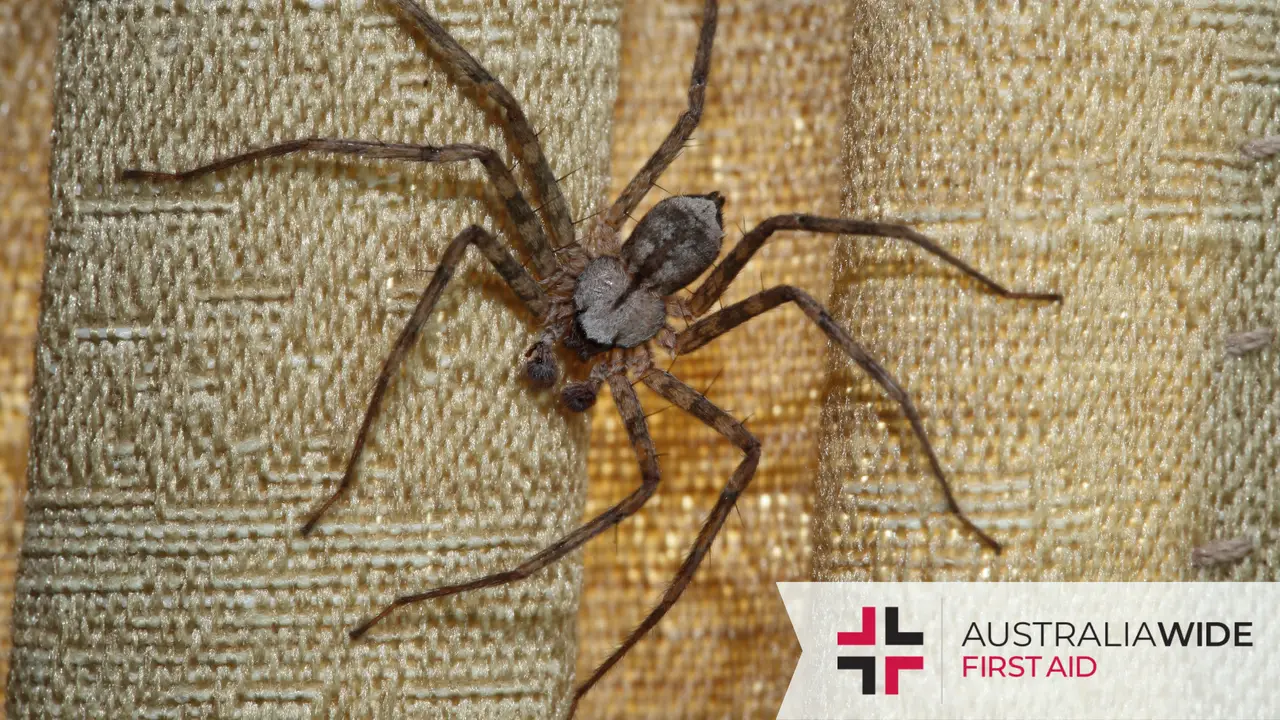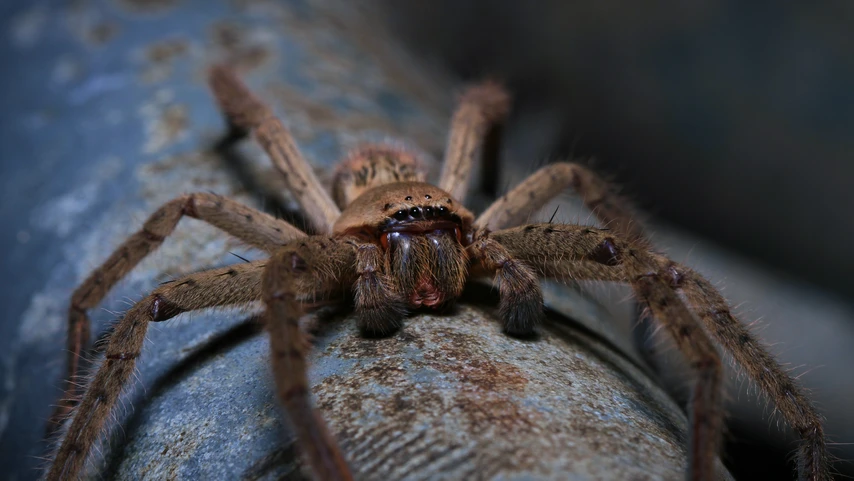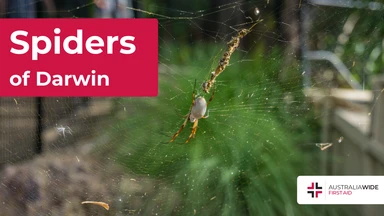4 Common Spiders in Tasmania


Despite its cooler climate, Tasmania is still teeming with all sorts of insects, including spiders.
In fact, it is home to a variety of spider species ranging from the virtually harmless to the deadly. While certain species of Australian spiders are mostly absent from Tasmania, such as the Mouse Spider, other species, like the Tasmanian Cave Spider, are endemic to the state.
This article will help you learn how to identify and treat bites from some of Tasmania’s most common spider species.
If you would like to learn more about providing spider bite first aid, enrol in one of our general or childcare first aid courses.
We have training locations in every state, capital city, and major town throughout Australia, including Tasmania.

The Garden Wolf Spider (Tasmanicosa godeffroyi) is the most common Wolf Spider in Tasmania.
They have a hairy body and are typically brown with grey, brown, or black markings. They also have long legs and can be anywhere from 1.2 to 5 centimetres in size.
They’re widely distributed across the entirety of Australia, not just Tasmania.
The Garden Wolf Spider is not considered dangerous to humans, as it will typically run away from trouble. Likewise, though they have been known to bite if threatened, their venom typically only causes mild symptoms, such as localised pain or itchiness.
You can find more information about the Wolf Spider in our Resource Library.
The Tasmanian Cave Spider is a species of spider found exclusively in Tasmania.
The carapace is reddish brown, while their abdomen is a dull and dark greyish brown. They also have the primitive pattern of four abdominal breathing organs, called book lungs, which are seen as four light-coloured patches on the underside of their abdomen.
They are quite a large spider, with an abdomen that’s roughly 2-3 centimetres in length, but with a leg span of up to 18 centimetres.
Tasmanian Cave Spiders are not aggressive or harmful to humans. More information about them can be found in our Resource Library.

The Lake Fenton Trapdoor Spider is a ground-dwelling spider found exclusively in Tasmania. It’s an endangered species, under threat from deforestation and tourism.
It’s only found in a few sites, including Lake Fenton in the Mount Field National Park, where it occurs in subalpine woodland. It may also be found in the Tarraleah area, in tall wet forests, though this is not confirmed.
It lives in burrows lined with silk that are five centimetres deep with entrances approximately one centimetre wide.
It can reach lengths of up to 1.5 centimetres and has a yellow-brown, strongly patterned abdomen.
This spider is extremely rare. If you are bitten, you should seek immediate medical attention.
We run certified First Aid courses throughout all major Australia citys. Find a location near you.

The Flat Huntsman Spider, also known as the Social Huntsman Spider, is found all over Australia, including Tasmania.
This spider is a social species, even known to share prey.
They typically live under loose bark in colonies of up to 300, though they are aggressive and cannibalistic to Huntsmans from other colonies.
They are timid towards humans and only bite infrequently. However, their large colony sizes can cause a bit of a fright to any unsuspecting passer-by.
Symptoms from their bites are typically very minor.
There are different first aid procedures for different types of spiders.
Bites from big black spiders, such as Mouse Spiders and Trapdoor Spiders, should generally be treated in the same manner as a Funnel-Web Spider. There are roughly 40+ varieties of large black spiders, so it's better to be safe than sorry:
All other spider bites mentioned in this article can generally be treated in the same manner as a Redback Spider bite:
Spider bites can sometimes trigger severe allergic reactions. This is called anaphylaxis, a condition that can be fatal in as little as 15 minutes. Symptoms include:
If the casualty begins exhibiting any of the above symptoms, call Triple Zero (000) for an ambulance, consult the Australian Resuscitation Council's anaphylaxis treatment guideline, and follow DRSABCD and prepare to perform CPR.
Tasmania is brimming with a variety of different spider species ranging from harmless to potentially deadly. You should treat all spider bites seriously and keep a close eye on them in case of deterioration or anaphylaxis.
For more information about identifying and managing bites from some of Australia's most common spiders, head to our Resource Library.
And if you would like to learn more about providing spider bite first aid, enrol in one of our general or childcare first aid courses.
We have training locations in every state, capital city, and major town throughout Australia, including Tasmania. Head to our website to enrol at a training location near you.

March 11, 2025
Darwin, the tropical capital of Australia’s Northern Territory, is home to a rich diversity of wildlife - including an impressive array of spiders. From the sprawling webs of golden orb-weavers to the cryptic camouflage of trapdoor spiders, these arachnids play a vital role in the local ecosystem. While some may inspire fear, the majority are harmless and even beneficial, helping to control insect populations.

September 4, 2024
Cat bites, while often underestimated, can lead to serious health complications if not treated promptly and properly. Cats' mouths harbour a variety of bacteria that can cause infections in humans.

April 1, 2024
Encounters with wildlife can often be thrilling, but when it comes to the creature known as the drop bear, the experience can quickly turn dangerous. A sharp increase in recent attacks prompts the need for understanding proper first aid procedures in case of an attack.